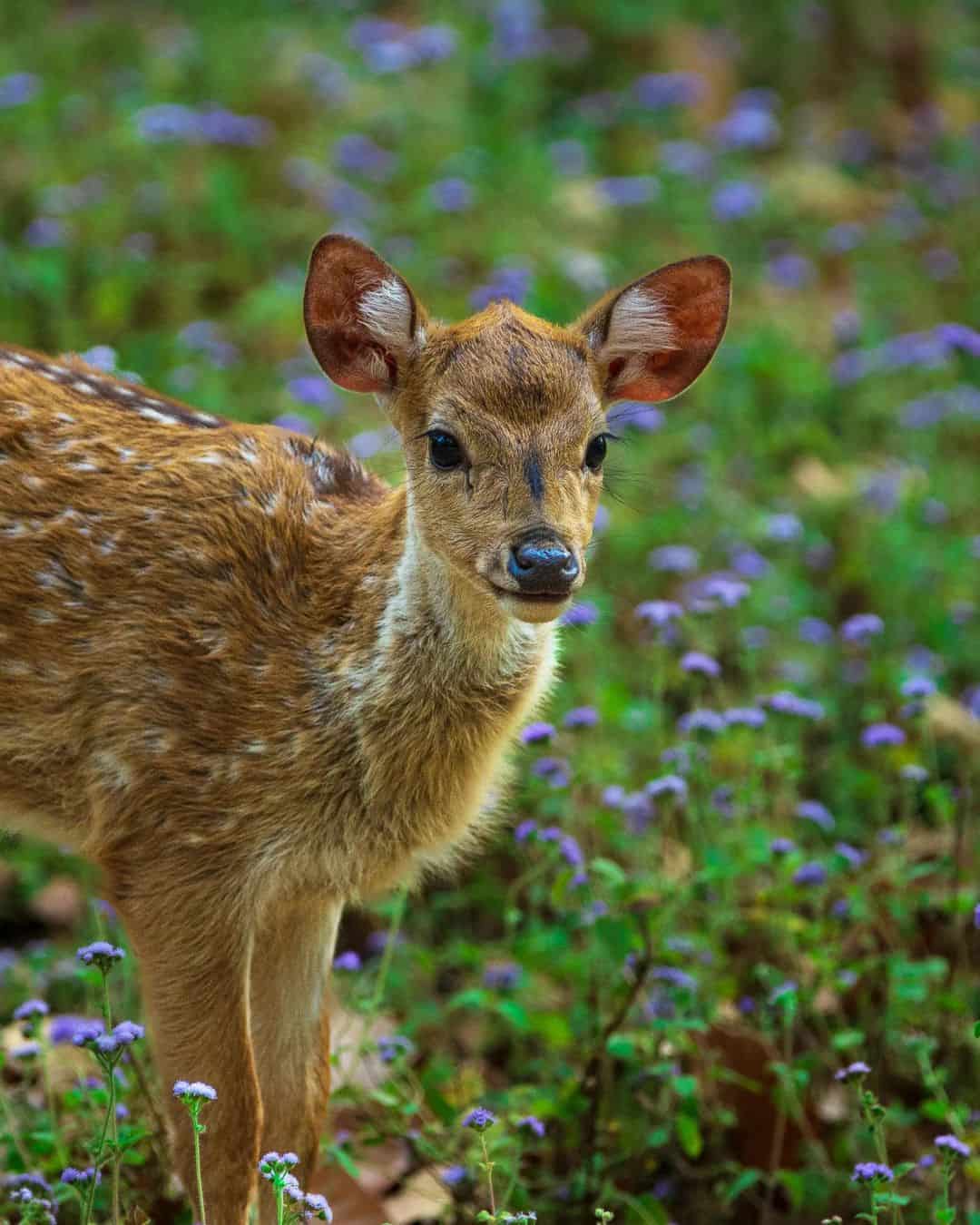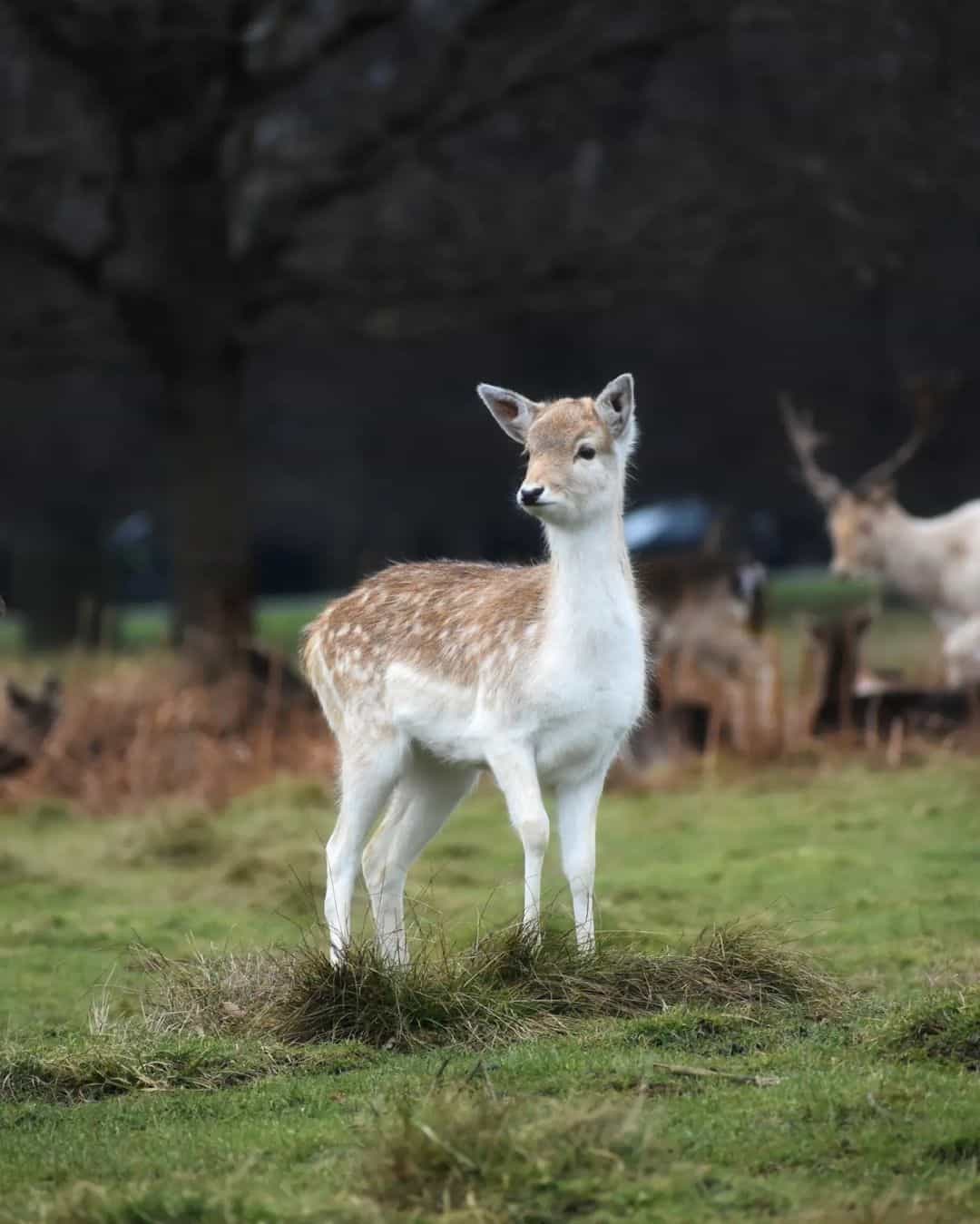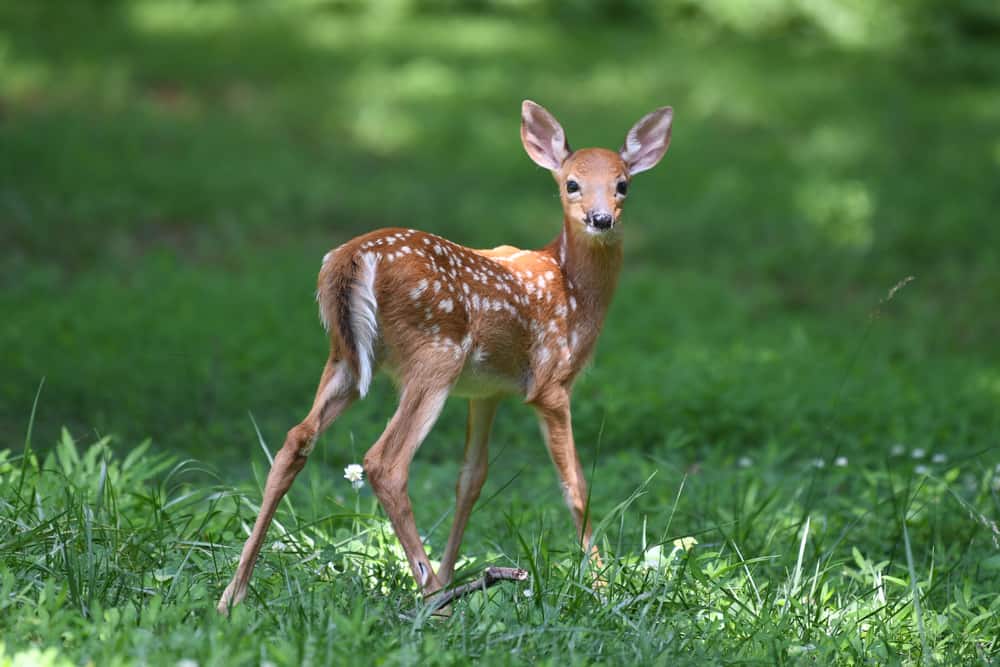Deer are beautiful creatures that are found throughout the world. They are lithe, are related to other creatures like elk and moose, and love to frolic through the woods. If you recently spotted a baby deer in your midst, you may be curious about what it’s called.
Believe it or not, there are a number of different ways you can properly call a baby deer. Let’s take a look at how to properly call them.
What is a baby deer called?
If you see a very young deer with white spots all over its body, then it truly is a baby! That is called a fawn. While there are multiple species of deer, most fawns are going to weigh between six and eight pounds.
Male fawns tend to be slightly larger, but regardless of gender, it’s always nice to see them. You will most likely see a deer in the fawn stage hiding in bushes waiting for its mother. Fawns do not have much in terms of defense, so they’ll rely on mom (the doe) to protect them.
The term “fawn” is typically used for common deer species like roe deer, red deer, and white-tailed deer. You might also hear this term related to muntjac deer. A good rule of thumb is that you can use this as a common term.
Want to hear a fun fact? The term “fawn” comes from the Old English word that means “glad.” So if you’re smiling about seeing the little cutie, you’re not alone. Joy’s literally in his or her name.
What is a deer calf?

The term “calf” is occasionally used for newborn fawns, but the truth is that this tends to be one of those baby deer names that are relegated to larger species. If you see an elk, reindeer, or wapiti, the correct name for this is a calf.
At times, young deer that are past the fawn stage but that still haven’t gotten antlers may also be called calves. This is true, even for white-tailed deer fawns, though it’s not always the correct way to talk about it.
What do you call an older (yet still young) deer?
What you call an older deer can change depending on the size and species. There are plenty of different terms people use. Here’s what you should know:
- A male deer of any age will be called a “buck,” while a female deer is typically called a “doe.”
- Older male deer can also be called a “stag.”
- Older female deer that are from a larger species can also be called a “hind.”
- Wapiti deer can be called “wapiti” if they’re male and “vixens” if they’re female.
- Larger female deer can also be called a “cow,” and larger male deer may also be called a “bull.”
PRO TIP – After the fawn ages a bit, you will be able to see whether or not the deer is male or female. Male deer typically grow antlers or horns, which clues you in on whether it’s a young buck or a young doe.
Why are there so many names for baby deer?
Honestly, it’s a long story. Most of the time, there are different names for deer because of the way language evolved in different parts of the world. You have to remember, deer are seen in almost every continent’s wilderness regions.
They’re in North America, Europe, Africa, and Asia. Due to the sheer number of languages and the ways that language evolved, there are going to be different terms. Even when it comes to slang terms, “fawn,” “buck” and “calf” tend to be interchangeable in some areas.
What should you do if you find a fawn?

One of the key characteristics of baby deer is that they are fairly defenseless. They are also born odorless, which means that deer can’t “sniff out” their young. This means that the only thing a fawn can do is sit and hide from nearby predators.
If you see a fawn, do not try to pick it up or pet it. Your human scent will end up on the fawn’s coat, which means that it may get rejected by its mother or by the herd it came from. This can harm its ability to survive on its own because other deer will avoid it.
An orphaned fawn is generally not a fawn that will survive to adulthood. This is true of mule deer, water deer, black-tailed deer, and just about every other species of deer out there. A single touch is all it takes for that to happen!
Is touching a fawn unsafe?
Yes, it’s not just unsafe for the baby deer. It also can be unsafe for you. You don’t know whether the fawn has ticks or fleas. Those can bite you and potentially cause diseases. That’s the issue that happens with wildlife of all types. You don’t know what they have on them.
It’s also important to remember that baby deer are never too far away from their mothers. The last thing you want to deal with is a protective mother that thinks you’re about to hurt their babies. They will attack you if they think that’s the case!
Conclusion
If you see a baby deer in the woods, you now know that the safest thing to call them is a fawn. You also know why you shouldn’t approach them and why it’s not a good idea to pet the baby deer.
But enough about what we explained. Let’s hear more from you. Do you have any questions for us? Tell us about them in the comments below.
